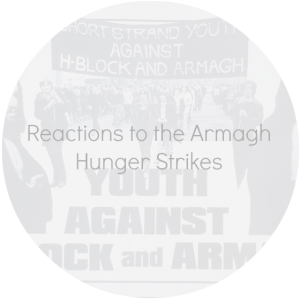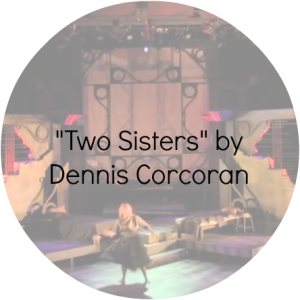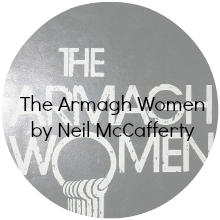Feminist responses toward the women in Armagh were polarized: either they felt they must support them as a women’s rights issue, or they felt that they could not support them due to their nationalist beliefs. The former group argued that the systematic male domination and sexual victimization within the prison bordered on human’s rights issues and could not be ignored. Many feminists took issue especially with the treatment of the prisoners during menstruation, during which they were inadequately supplied with sanitary products, and so smeared menstrual blood on the walls along with feces. One doctor commented on the effects of this kind of treatment:
“The most obvious stress results from the denial of adequate quantities of sanitary towels during menstruation. A ration of any sort is not only a cruel attempt at degradation.., but is physically inadequate” (Weinstein, 28).
In light of these concerns, along with sexual abuse, a faction of feminists took active support for the Armagh women. Indeed, the Armagh women themselves identified their issue as a feminist one,
“It is a feminist issue in so far as we are women, even though we are treated like criminals. It is a feminist issue when the network of this jail is completely geared to male domination. The governor, the assistant governor, and the doctor are all males. We are subject to physical and mental abuse from the male screws who patrol our wing daily, continually peeping into our cells. If this is not a feminist issue, then we feel that the word feminist needs to be redefined to suit these people who feel that “feminist” applies to a certain section of women rather than encompassing women everywhere, regardless of politically held views” (Weinstein, 26).
This identification with the feminist cause was also complicated by the prisoners’ claim that they weren’t separate from the men. The motive behind their protest was the same as the men’s, but they had been prevented from fully joining the men in their protest due to the gender inequalities within their own organization. Many people, like the faction of feminists supporting them, saw their protest as one against the degradation and mistreatment within the prison, less so as a political protest in the name of nationalism. Many republican women disagreed with this interpretation:
“People keep separating Armagh from H-Block. They shouldn’t be separated, they’re together, they are the same. The girls are not getting washed; there’s excreta smeared on the walls; no medical treatment; very little and almost inedible food (most of the girls live on bread most of the time); and harassment and beatings from the screws” (Weinstein, 25).
This reasoning is however, the main reason that many feminists refused to support the protesters. The nationalist goal of a “united Ireland,” which many republican women desired greater than their own freedom as women, many feminists did not agree with. To have a united republic would be to have the ideology of the republic, and necessarily of Catholicism, which was even more fiercely oppressive to women. One woman supported this stance:
“And that is why in no way am I looking for a united Ireland when, as things stand at the minute, all that would mean is more male domination” (Weinstein, 29).
For some women, the connection with the republican cause outweighed the issues of women’s rights at hand, and split the feminist community in their responses to the Armagh women. The schism between feminists was very clear, and those who supported the feminist caused criticized those who refused. Margaret D’arcy commented on this reaction:
“amazing how many women calling themselves feminists, closed their eyes, blocked up their ears, and ran to their political parties – Fine Gael, Sinn Fein the Workers’ Party, and the Irish Labour Party – seeking urgent reassurance in the old patriarchal priorities of women s needs” (Sullivan).
Catholic Responses Republican Responses Feminist Responses









